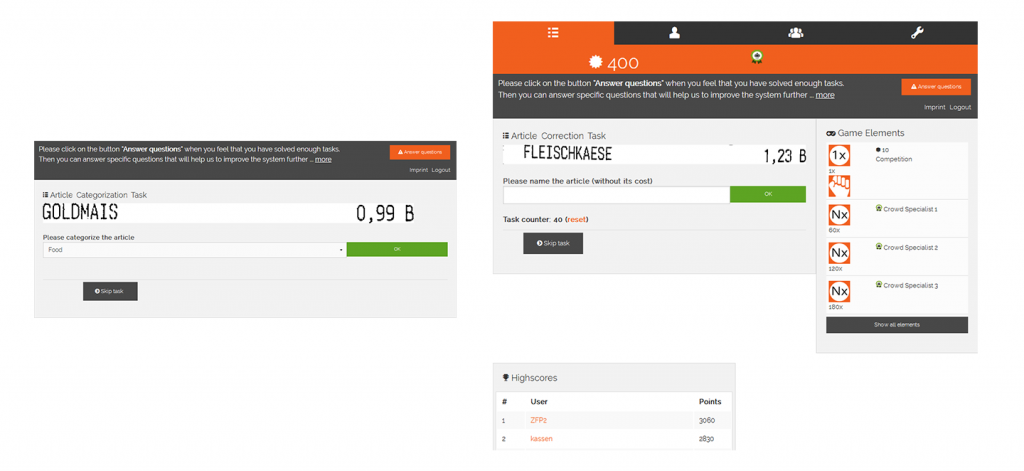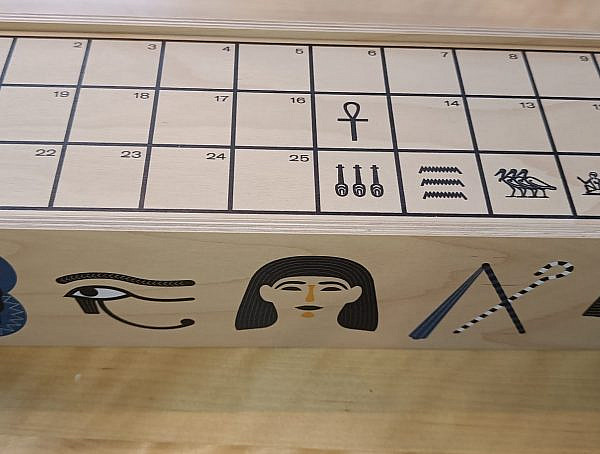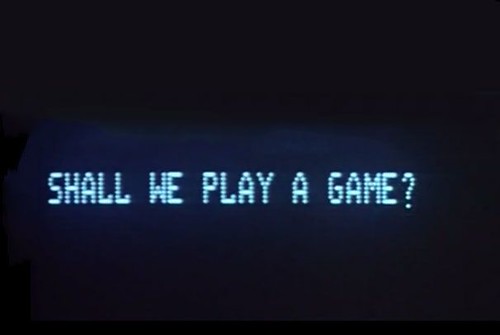The idea of utilizing elements known from games in a non-game context a.k.a Gamification is known as an option in persuasive technologies to change behavior. Lessel et al’s article Measuring the Effect of “Bottom-Up” Gamification in a Microtask Setting sets itself to explore if the act of giving users the freedom of customizing gamification elements would increase the effectiveness of gamification.
The authors’ thesis is based on earlier research that suggests a one-size-fits-all approach to gamification may not be the best possible solution, as various criteria (eg. personalities/player types) demand different gamification setups. To test this out, the authors conducted an experiment comparing various degrees of gamification customization to figure out if 1) giving users the freedom to gamify a system to their liking would work better than the traditional “designer decides everything” approach; and 2) to what degree would this customization work best.
Armed with these questions, the researchers recruited unknowing participants to an online platform where they could complete as many microtasks (a.k.a tasks that could be solved in seconds) as they wanted. To put the participants in the desired mindset, they were briefed with a cover story that what they were doing was to solve microtasks that will help improve the recognition performance of an algorithm for automatic digitization of receipts.

Example of microtask in the research with gamification
There were 5 different conditions where the participants were placed in:
- “No gamification” – your run-of-the-mill, mundane baseline where only the microtask was presented to the participant without additional gamification
- “Top-down gamification” – the traditional fully designer defined gamification setup with all gamification elements unleashed
- “Selective top-down gamification” – participants have the option of selecting and deselecting from the list of predefined configurations BUT couldn’t make any further tweakings
- “Selective bottom-up gamification” – Like the selective top-down gamification option, BUT participants could also make adjustments on the frequency of a reward
- “Bottom-up gamification” – where participants were given free rein to pick what gamification elements they wanted to be included while they were working on the microtasks and make further tweakings, or if they wanted to use the gamification option at all

Left: Without gamification / Right: Topdown gamification
In a span of 6 weeks, the researchers collected data on the participants who completed tasks on their platform under one of the above-mentioned conditions. Some of the interesting findings of the study were that participants in the adaptable conditions (= conditions 3 to 5) were more efficient at completing the tasks than the “no gamification” and “top-down gamification” group. From the survey data they collected from the participants, it seems that being able to make changes to gamification features seem to create the impression that the microtasks that they were doing were fun, and also motivated the participants to outperform the other groups.
However, there were some questions that open up from this research. For one, the researchers were unable to conclude if the participants performed better simply because they selected a game configuration that suited them, or if it is the fact that they could choose that provided the motivation. That said, both speculations still provide support for providing choices in gamification systems. With these interesting findings however, understanding the cause that favors “bottom-up gamification” and the ramifications of self-selected elements in future research would help us understand this phenomenon more.
–
Original Article Title: Measuring the Effect of “Bottom-Up” Gamification in a Microtask Setting
Authors: Pascal Lessel, Maximilian Altmeyer, Marc Müller, Christian Wolff, Antonio Krüger
Published: Proceedings of the 21st International Academic Mindtrek Conference
Original article accessible here.
You might also like
More from Game Research Highlights
How do you want to do this? – A look into the therapeutic uses of role-playing games
Can playing RPGs contribute positively to your wellbeing? A recent study aims to find out how RPGs are being used …
Eldritch horrors and tentacles – Defining what “Lovecraftian” is in games
H.P. Lovecrafts legacy lives today in the shared world of Cthulhu Mythos and its iconic monsters. Prema Arasu defines the …
Are Souls Games the Contemporary Myths?
Dom Ford’s Approaching FromSoftware’s Souls Games as Myth reveals the Souls series as a modern mythology where gods fall, desires …















